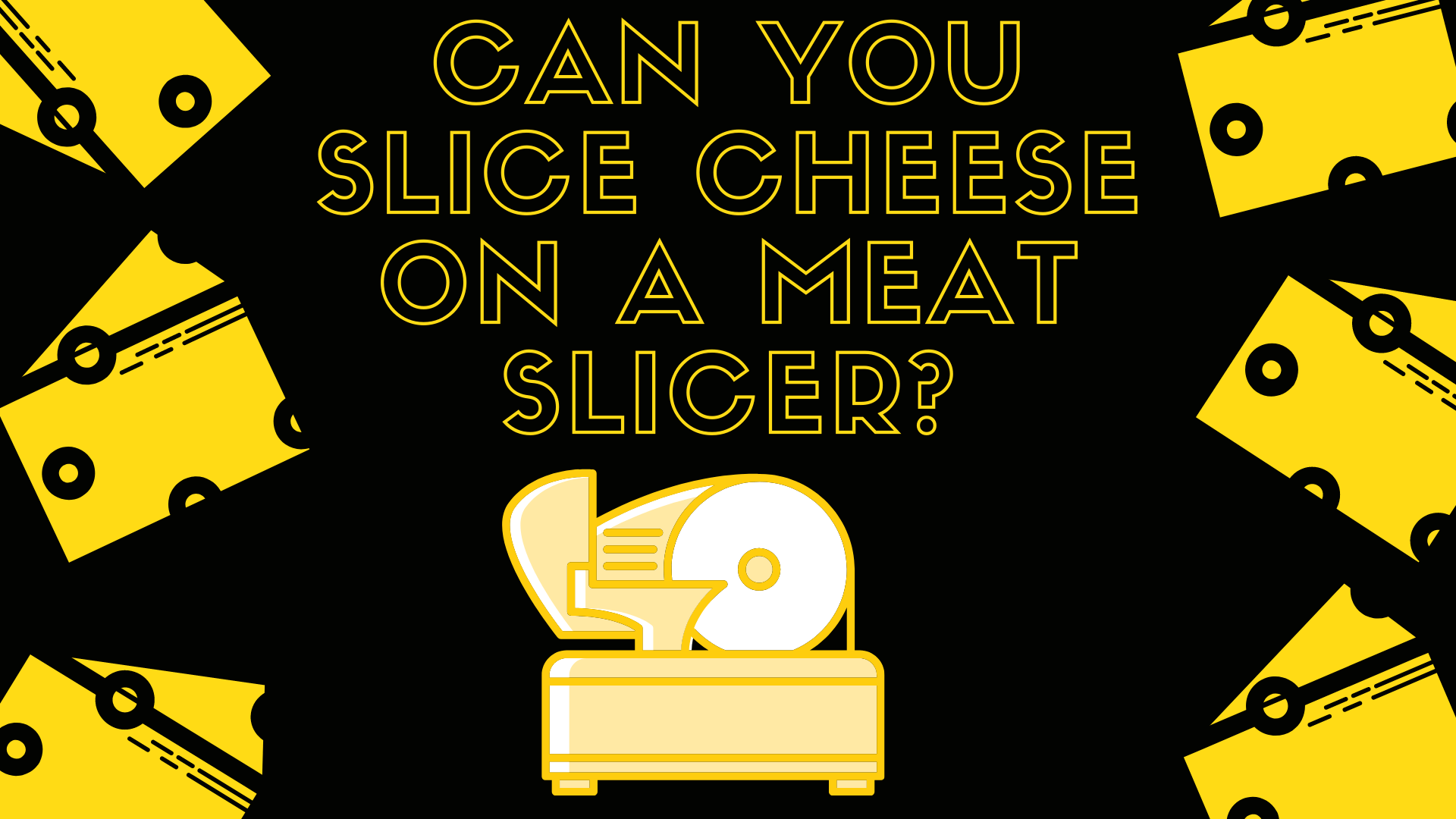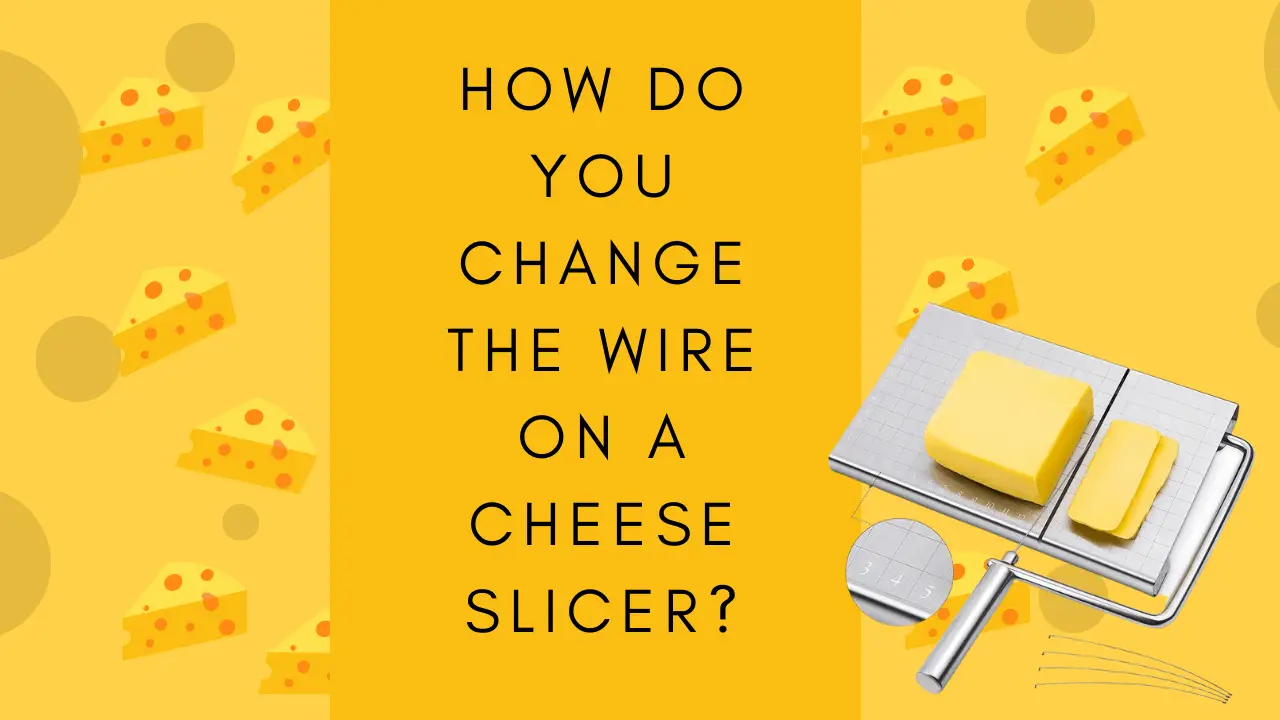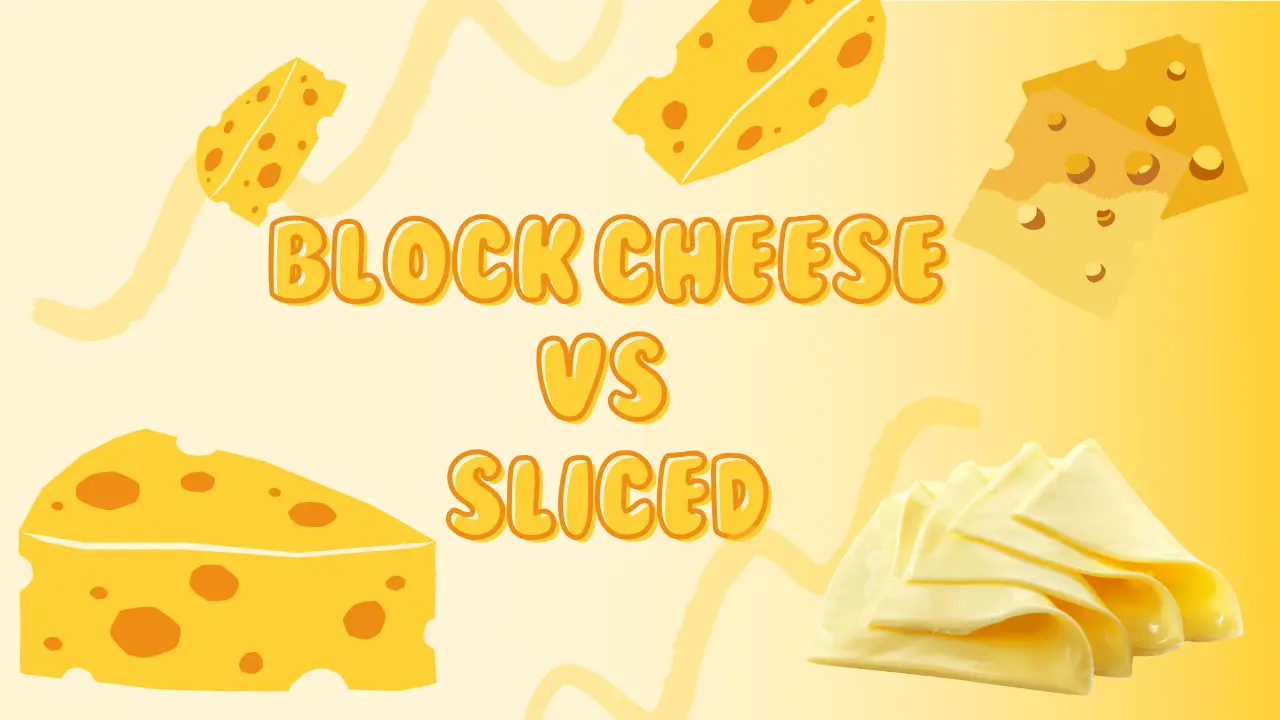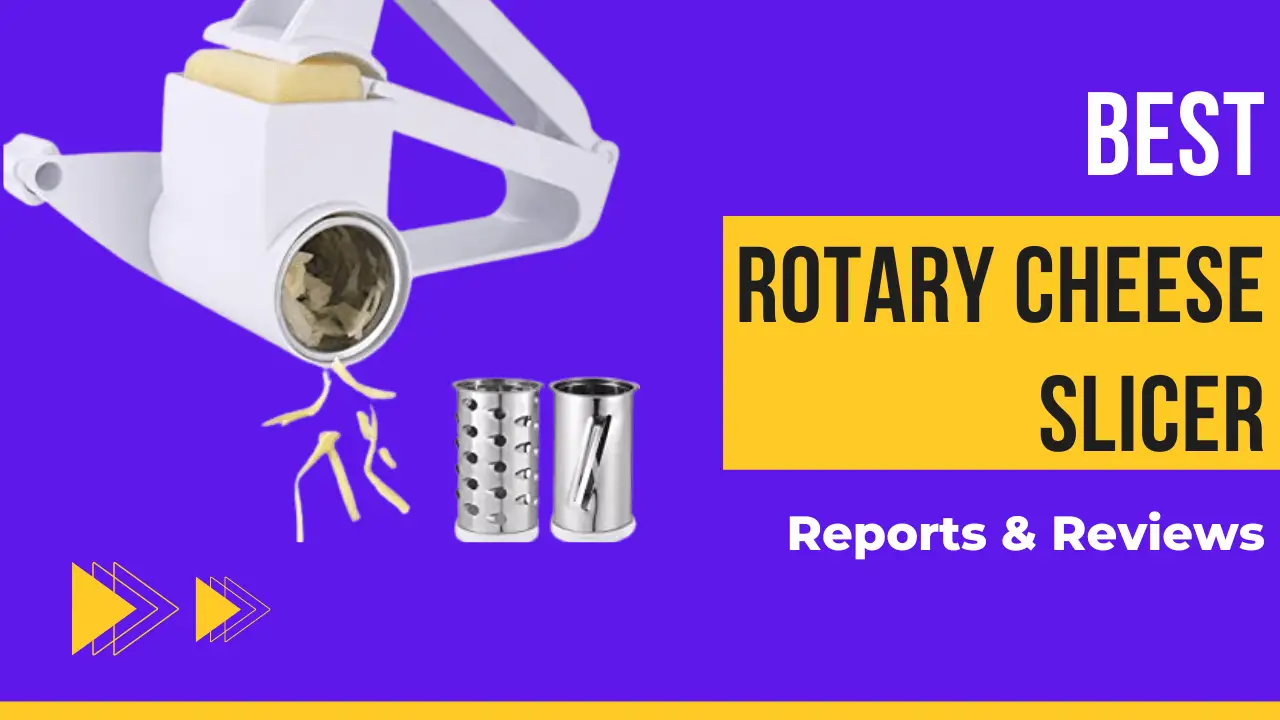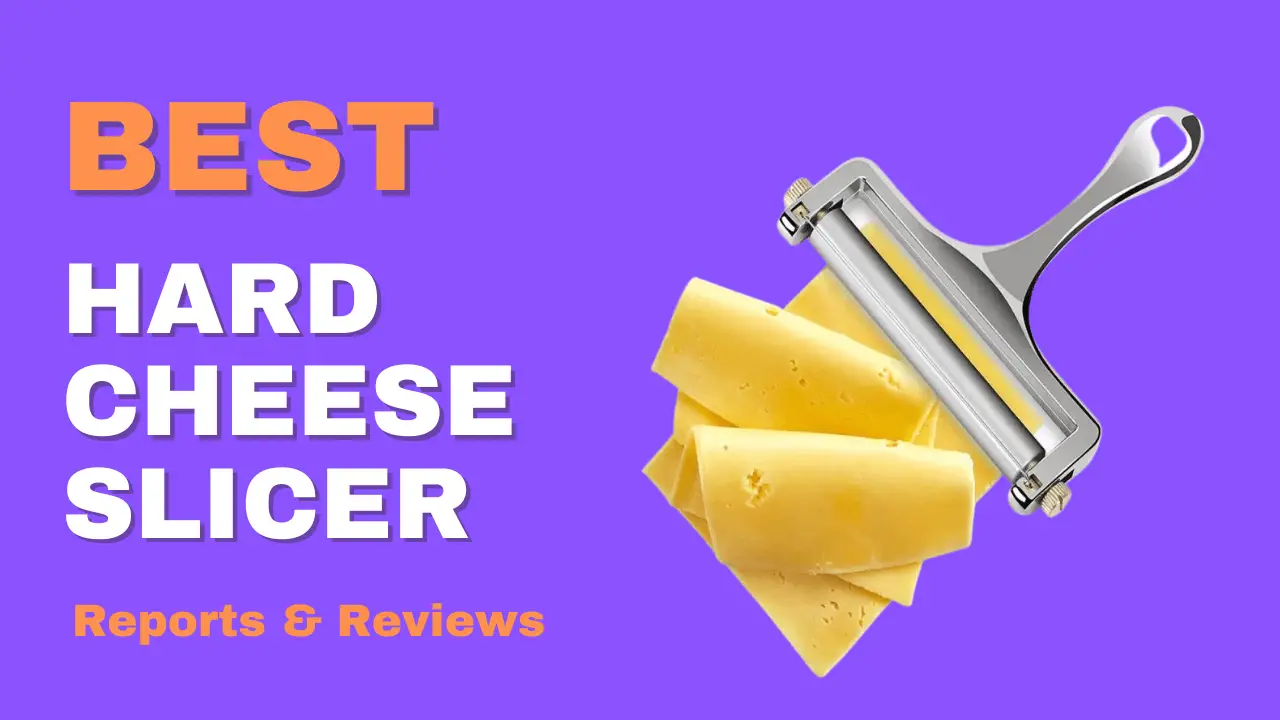Cheese lovers understand that the right slicer can make all the difference in how their favorite treat is enjoyed. The two most popular cheese slicers are the wire and the plane. Both offer distinctive advantages; deciding between the two is often a matter of personal preference and usage specifics. With its thin metal strand, the wire cheese slicer ensures precise and clean cuts, often preferred for soft to semi-hard cheeses. On the other hand, the plane cheese slicer, bearing a flat, broad surface and sharp-edged slits, is typically favored for harder cheeses, providing uniform slices every time.
The Wire Cheese Slicer
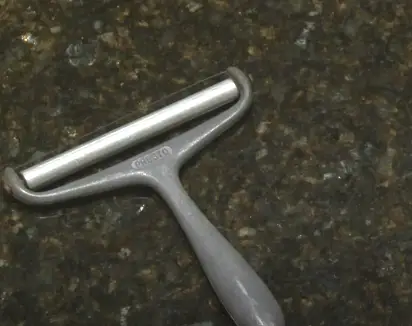
How it works

The wire cheese slicer features a taut, thin wire pulled through the cheese, slicing it as it goes. A frame or handle typically holds the wire in place, providing stability and control during the slicing process.
Advantages:
- Precision: The wire slicer can create thin, consistent slices, ideal for delicate cheeses or charcuterie boards.
- Adjustable: Some models have an adjustable wire, allowing for customized thicknesses.
- Minimal waste: The thin wire produces less friction, reducing the chances of cheese sticking or crumbling.
Disadvantages:
- Less versatile: Wire slicers are typically unsuitable for hard cheeses, as the wire can break or become misaligned.
- Durability: The wire can lose tension or break over time, requiring replacement.
The Plane Cheese Slicer
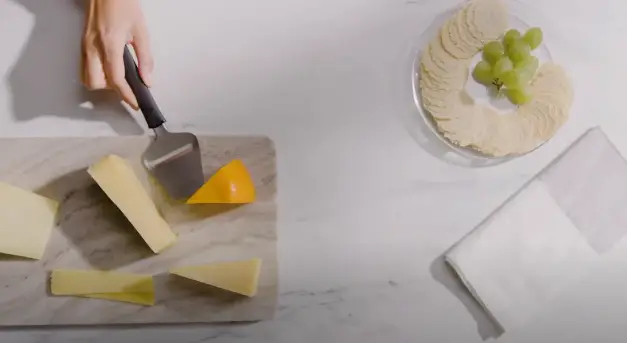
How it works:
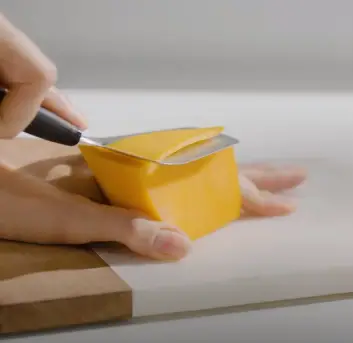
The plane cheese slicer cuts through the cheese with a flat, wide blade. Users slide the blade along the cheese block, and the desired slice thickness is achieved by adjusting the angle and pressure applied during slicing.
Advantages:
- Versatility: The plane slicer can handle a wider range of cheese types, from soft to hard.
- Durable: The blade is often made of stainless steel or other sturdy materials, increasing the slicer’s longevity.
- Easy to clean: The flat surface makes it simple to clean and maintain.
Disadvantages
- Less precise: Creating consistently thin slices with a plane slicer can be challenging.
- More waste: Cheese can stick to the blade or crumble during slicing, resulting in waste.
Comparing The Wire And Plane Cheese Slicers
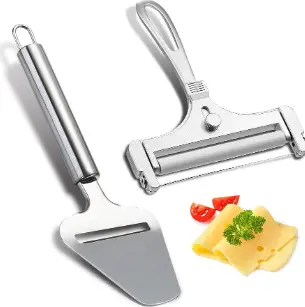
Ease of use: Both the wire and plane slicers are relatively easy to use, but the wire slicer may require a steadier hand to produce consistent slices. The plane slicer’s learning curve is slightly steeper due to the need for angle and pressure adjustments.
Versatility: The plane slicer wins in versatility, as it can handle a broader range of cheese types than the wire slicer. However, the wire slicer might be a better option if you primarily enjoy softer cheeses.
Durability: The plane slicer tends to be more durable due to its sturdy construction. Wire slicers can be prone to wire breakage or loss of tension, which may require replacement or repair.
Maintenance: Both slicers require minimal maintenance. However, the wire slicer may need periodic wire replacement, while the plane slicer needs occasional sharpening. The plane slicer is generally easier to clean due to its flat surface.
Price: The price range for both types of slicers can vary widely depending on the brand and materials used. However, wire slicers are often more affordable, while plane slicers can be more expensive due to their more durable construction.
Which Cheese Slicer Is Right For You?
Ultimately, the choice between a wire and a plane cheese slicer depends on your preferences, the cheeses you typically enjoy, and your budget. If you primarily eat soft cheeses and value precision in slicing, the wire slicer may be your best option. The plane slicer is worth considering if you prefer a more versatile and durable slicer that can handle a wide range of cheese types.
FAQs
Can I use a wire slicer for hard cheeses?
While using a wire slicer for some hard cheeses is possible, it is generally not recommended, as the wire may break or become misaligned. A plane slicer is better suited for hard cheeses.
How do I clean and maintain a plane cheese slicer?
A plane cheese slicer can typically be cleaned with warm, soapy water and a soft cloth. Dry it thoroughly to prevent rust or corrosion. You may need to sharpen the blade occasionally to maintain its slicing efficiency.
How do I replace the wire on a wire cheese slicer?
If your wire slicer has a replaceable wire, consult the manufacturer’s instructions for replacement guidelines. Typically, you must loosen a screw or other fastener, remove the old wire, insert the new wire, and then tighten it to secure it.
Are there any other types of cheese slicers available?
Yes, other cheese slicers include the rolling slicer, which features a blade attached to a small wheel, and the cheese knife, a specialized knife designed for cutting cheese.
What material is best for a cheese slicer?
Stainless steel is a popular choice for cheese slicers due to its durability, resistance to rust and corrosion, and ease of cleaning. Other materials like aluminum and plastic may also be used, depending on the slicer’s design and intended use.
Conclusion
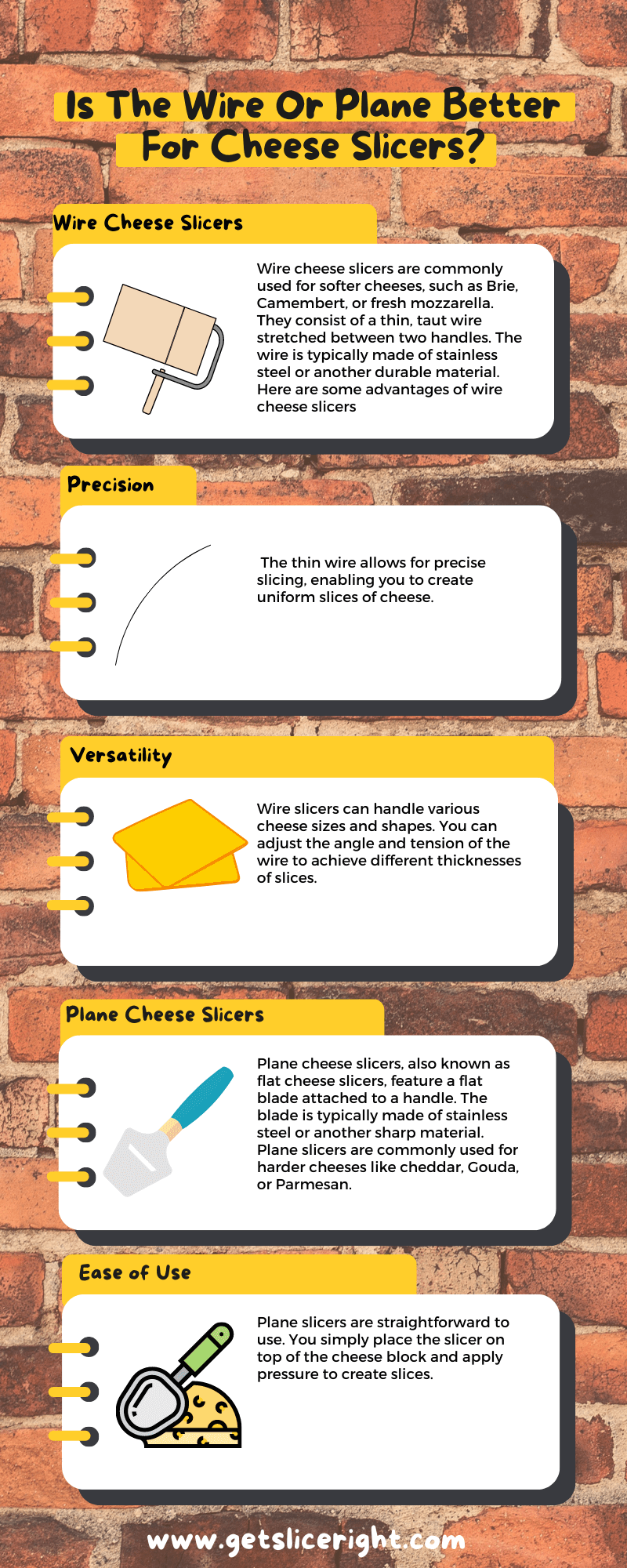
There is no definitive answer to whether the wire or plane is better for cheese slicers, as both have unique advantages and disadvantages. You can decide based on your specific needs and preferences by considering ease of use, versatility, durability, maintenance, and price.
External Links
- Versatility: The Many Uses of Cheese Slicers in the Kitchen
Table: Similarities and Differences between Wire Cheese Slicer and Cheese Planer
| Feature | Wire Cheese Slicer | Cheese Planer |
|---|---|---|
| Function | Slicing cheese using a wire | Slicing cheese using a blade |
| Precision | High | Lower |
| Versatility | Best for soft cheeses | Suitable for all cheese types |
| Durability | Less durable (wire can break) | More durable |
| Maintenance | Wire replacement required | Occasional blade sharpening |
| Cleaning | Easy, but wire may need care | Easy due to flat surface |
| Price | Generally more affordable | It can be more expensive |

Mario Batali is a renowned author, food enthusiast, and passionate chef who has dedicated his life to exploring the world of culinary arts. With a love for sharing his knowledge and experiences, Mario has become a prominent figure in the food blogging community, inspiring countless readers with his creativity and expertise.
In addition to his culinary prowess, Mario Batali is also a talented writer with a flair for engaging storytelling. He launched his own food blog to share his recipes, cooking tips, and personal experiences in the kitchen. Over time, Mario’s blog gained a loyal following of food enthusiasts who appreciate his unique approach to cooking and his dedication to using only the finest ingredients.
Mario Batali’s passion for food and his commitment to sharing his knowledge with others have made him a true inspiration in the world of culinary arts. Through his blog, cookbooks, and public appearances, Mario continues to spread his love of food and the joy of cooking with his ever-growing fanbase.

